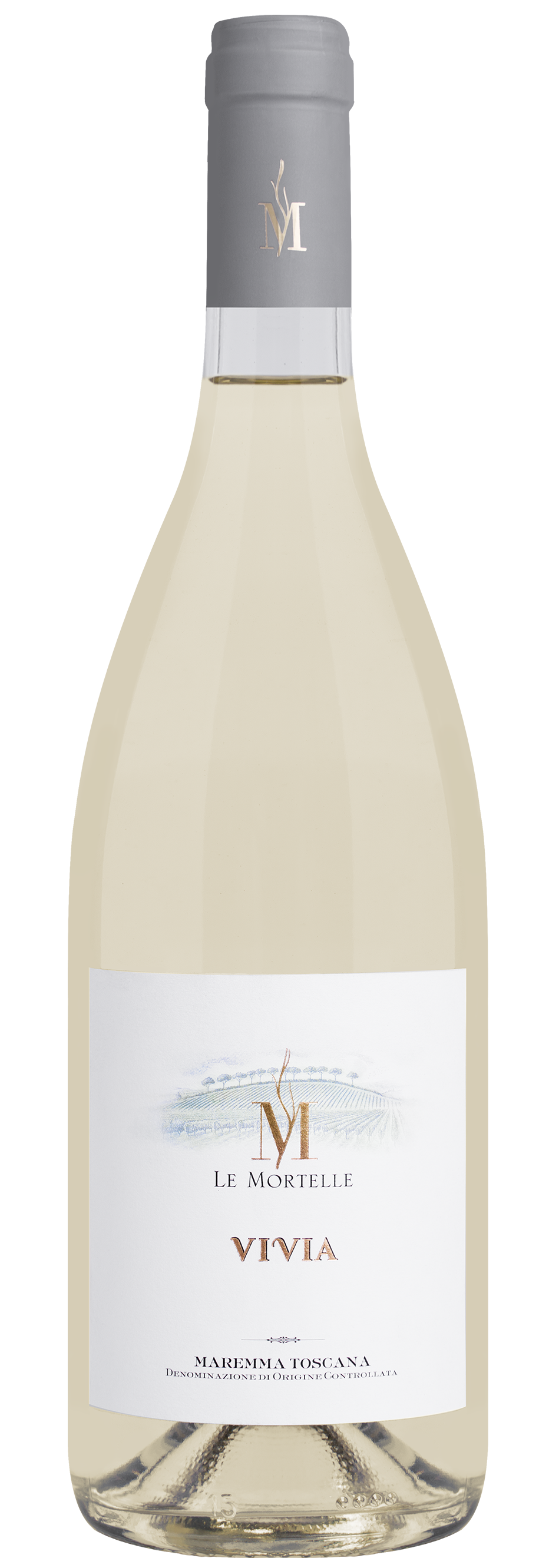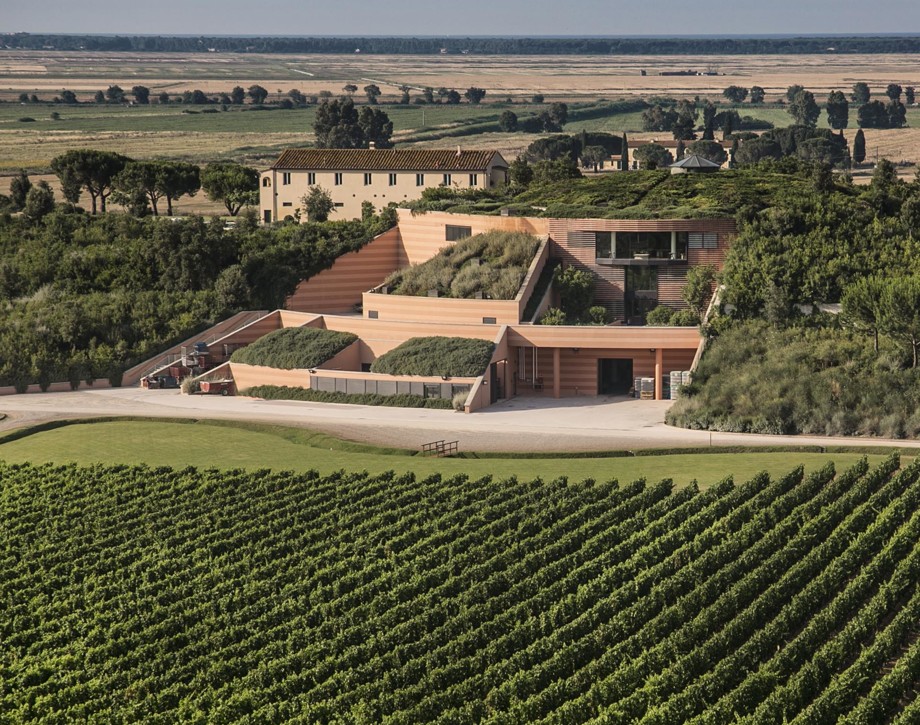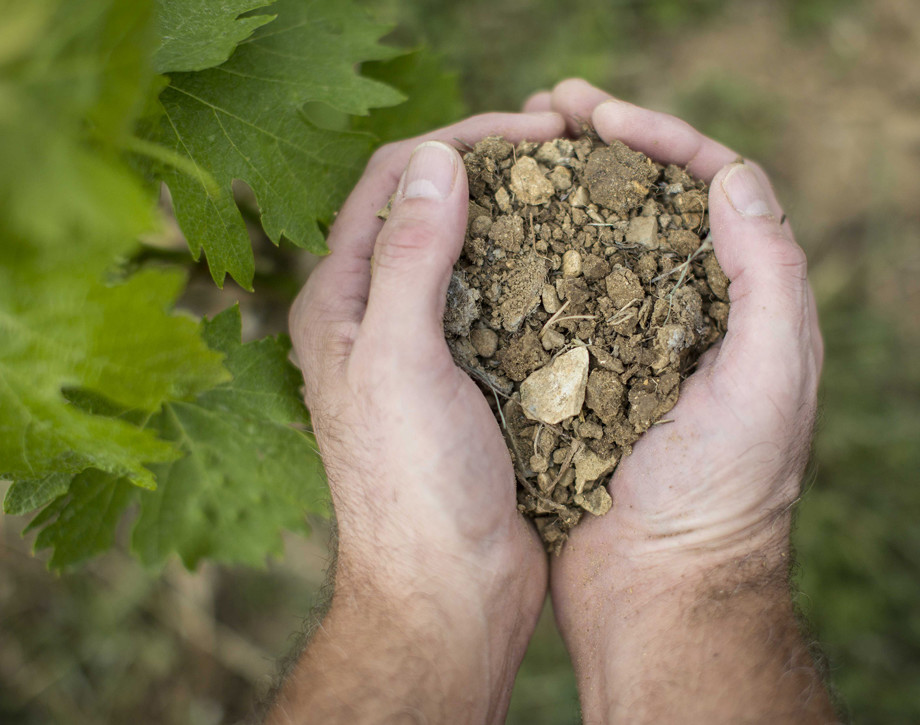Vivia

The Wine
This wine is harvested from vineyards indigenous to the Tuscan coast, a blend of Vermentino and Viognier and a small percentage of Ansonica: a successful result of patient research that produced an elegant white wine expressing the colors and aromas of the Maremma coastline.

The Wine
This wine is harvested from vineyards indigenous to the Tuscan coast, a blend of Vermentino and Viognier and a small percentage of Ansonica: a successful result of patient research that produced an elegant white wine expressing the colors and aromas of the Maremma coastline.

Climate
The first half of the 2023 growing season at Le Mortelle can best be defined as cool and rainy, particularly until June, while the summer months experienced heat spikes. Budbreak took place right on schedule but rain showers in May and June caused slightly inconsistent flowering and fruit set. The end of August/beginning of September brought both lower temperatures and ideal temperature swings between day and night, factors that allowed the grapes to preserve their unique aromatic profiles. The grape harvest began the first week of September with Viognier, continued with Vermentino and was completed at the end of the month with Ansonica.
Vinification
Upon arrival in the cellar, the grapes were gently pressed, and each grape variety was fermented separately to accentuate their unique characteristics. The must of each grape variety was cooled down to a controlled temperature of 10 °C (50 °F) for 24 hours to favor natural clarification. The clarified must was transferred to temperature controlled stainless steel tanks for alcoholic fermentation at 16 °C (61 °F). Vivia was aged on the lees for a short period of time in stainless steel tanks, approximately three months, before being bottled in January 2024.
Historical Data
The Mortelle estate is in the heart of Maremma in Tuscany, near the town of Castiglione della Pescaia set in an extraordinary and fascinating position both for the territory’s unparalleled natural beauty and its historical heritage and culture. The Antinori family has been part of this territory for generations. Evidence of ownership of land in this area is recorded on a property deed dated 1863. It states their ownership of Poggio Franco, one of the best vineyards on the estate, together with other parcels of land. Since 1999, when the property was acquired, the family has dedicated their efforts to improving the vineyards and building the new winery with the firm belief that this area, slowly emerging on the Italian viticultural horizon, has great potential for the production of high quality wines. Varieties grown in this area can fully express their own characteristics as well as the exceptional qualities of the terroir. The soil is of medium consistency, sandy and loamy composed of clay and silica and in some parts of the estate is rich in rocky deposits. Vermentino and Ansonica, typical grape varieties cultivated in Tuscany’s costal area, grow alongside Viognier, a vine that has recently been planted after years of patient research to produce an elegant white wine expressing the colors and aromas of the Maremma coastline.
Tasting Notes
Vivia 2023 is straw yellow in color with bright green hues. Aromatic and intense on the nose with notes of citron, pears and lychee accompanied by floral hints of jasmine and orange blossoms. The palate is pleasantly fresh, savory and typically Mediterranean.

Fattoria Le Mortelle
The Mortelle estate is in the heart of Maremma in Tuscany, near the town of Castiglione della Pescaia set in an extraordinary and fascinating position both for the territory’s unparalleled natural beauty and its historical heritage and culture. The Antinori family has been part of this territory for generations. Evidence of ownership of land in this area is recorded on a property deed dated 1863. It states their ownership of Poggio Franco, one of the best vineyards on the estate, together with other parcels of land. Since 1999, when the property was acquired, the family has dedicated their efforts to improving the vineyards and building the new winery with the firm belief that this area, slowly emerging on the Italian viticultural horizon, has great potential for the production of high quality wines. Varieties grown in this area can fully express their own characteristics as well as the exceptional qualities of the terroir. The property extends over an area of 270 hectares (667 acres) 175 of which (432 acres) are planted with vineyards of Cabernet Sauvignon, Cabernet Franc and other more recently planted vineyards with white grape varieties such as Vermentino, Ansonica, Viognier and a small parcel of Carménère. The soil is of medium consistency, sandy and loamy composed of clay and silica and in some parts of the estate is rich in rocky deposits.

Soil
Loamy soil with sand and silt.


















